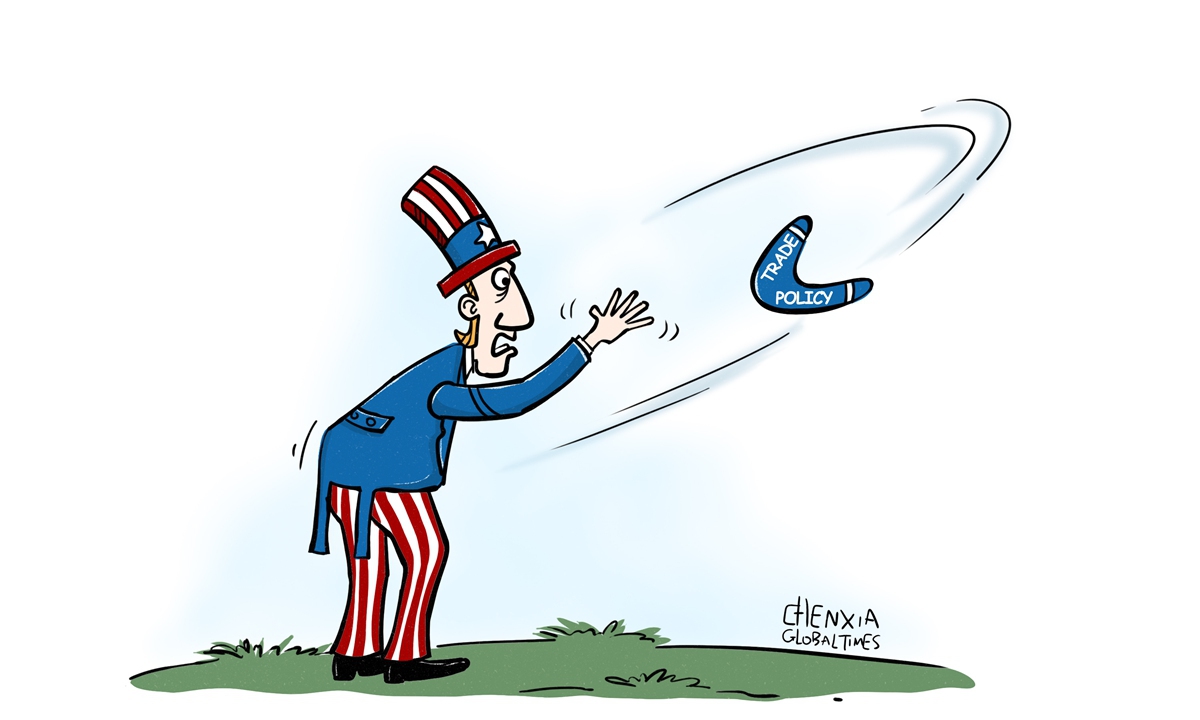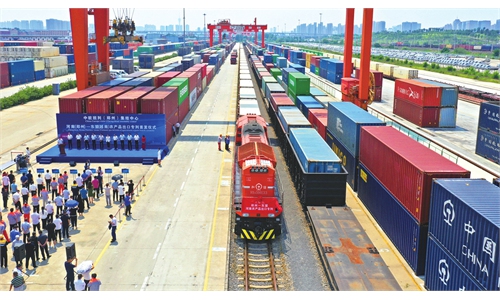
Illustration: Chen Xia/Global Times
A further US extension of China "Section 301" tariff exclusions till May 31, 2024 has been praised by the business community, but there are some disappointments, as the US' moves toward improving bilateral trade are limited.
Since 2018, when the US launched a trade war against China, the entire world, global supply chains and China-US trade relations have undergone complicated and profound changes, which should prompt the US to abandon its outdated thinking and restructure its trade policy toward China.
In 2018, then US president Donald Trump took his first step in the trade war with China by imposing additional tariffs on certain imports from China. Trump's trade policies quickly received a tide of criticism from the business community, forcing Washington to exclude a long list of Chinese-made goods from the additional tariffs imposed as part of the trade war.
The economic logic behind tariff exclusions offers clues about the highly complementary economic structure that has been supporting the continuous development of the Chinese and US economies. The number of categories of Chinese imports enjoying tariff exemptions should be expanded, rather than reduced.
As reported by Reuters, the Trump administration initially granted more than 2,200 exclusions to the tariffs to provide relief to certain industries and retailers. Most were allowed to expire, but 549 were extended for a year, and these expired at the end of 2020. In March 2022, the US reinstated exemptions on 352 out of 549 categories of Chinese imports from the so-called Section 301 tariffs after previously granted exemptions expired.
The office of US Trade Representative on Tuesday announced a further extension of tariff exclusions on 352 Chinese imports and 77 COVID-19-related categories until May 31, 2024.
Compared with the initial list of 2,200 items, the exemption scale is too small. If the US cannot remove all additional tariffs on Chinese products as soon as possible and push for bilateral economic and trade relations to get back to normal, it should at the very least widen the tariff exclusion list, which will help improve bilateral trade and play a positive role in stabilizing global supply chains.
More importantly, the US should change its policy based on the latest developments in global trade. If the US retains its current trade policy, consisting of additional tariffs and tariff exclusions, it will be difficult to adapt to the needs of today's developments. Fundamental changes should be made.
As reported by the Wall Street Journal, a study published by the Bank for International Settlements in October found that supply chains between China and the US have turned more complex. Many goods supplied to the US still originate from China, implying limited progress with diversification.
In 2018, many economists believed that Washington's additional tariffs would seriously hit China's exports. Five years have passed, and the reality is that China is more deeply integrated into global supply chains and it's expanding its trade network. China's manufacturing advantage has not been weakened; on the contrary, it has been strengthened.
Another change is that the effectiveness of the US technology blockade is declining. Huawei's high-end Mate 60 Pro smartphone, which some speculated was using a 5G capable chip, makes the Chinese semiconductor industry look resilient in the face of Western sanctions. The US trade policy adopted in the past five years has not produced expected results; on the contrary, it has had a negative impact on China-US trade and the US economy. Now, it's time to make changes.
The further extension of US tariff exclusions until May 31 won't resolve fundamental bilateral problems. It only acts as a reminder of the economic logic behind tariff exclusions. US politicians have to make concessions due to high complementarity between the Chinese and US economies.
Intensive high-level engagements between Beijing and Washington have raised expectations among the international community for stabilizing relations, despite challenges that remain. Hopefully the US can do more to make its trade policy be beneficial to the development of bilateral trade.



